On one of the blistering hot days we have had this summer, we took a trip with the Mail boat on Nakskov Fjord in Denmark. The Mail Boat delivers mail and groceries to the islands in the Fjord and give tourists a possibility to visit the islands and Albuen (the Elbow), which is the tip of the southern part of the Fjord, otherwise inaccessible except by foot or bike.
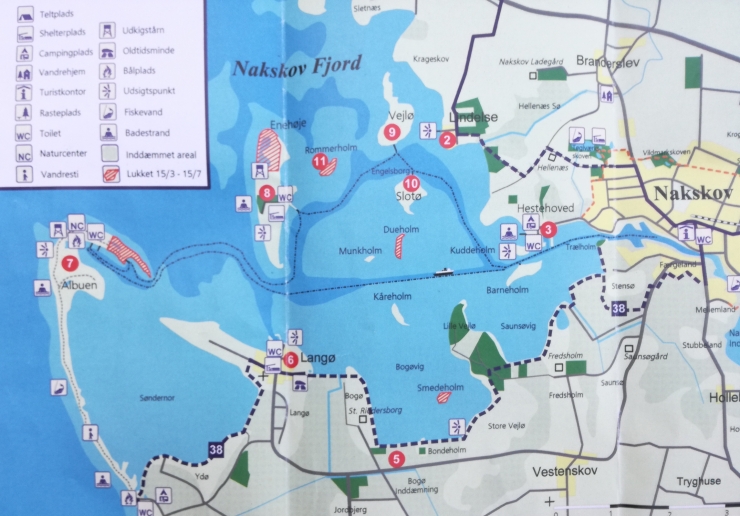
We didn’t come ashore on Slotø but from the Mail boat one could easily see the ruins of the combined Castle and shipyard called Engelsborg that King Hans established in 1509-10.
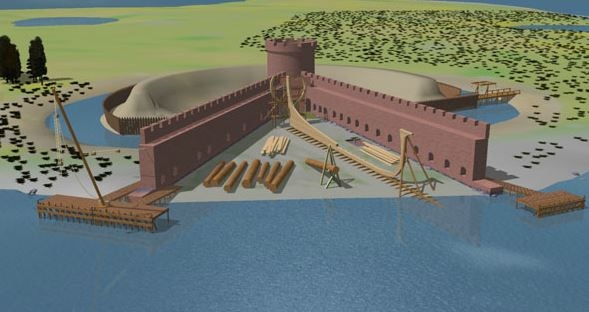
The privately-owned island Slotø is best known for the now ruined fortress, Engelsborg. This fortress is an unusual combination of a shipyard and fortress. It was built on Slotø since ships could be launched here due to water depths of up to 8 meters just outside the fortress.
Combined with the fact that the navigable channel to Nakskov was midway between Slotø and Vejlø so the cannons on the fortress could protect the entrance to Nakskov, which was then one of the country’s main maritime towns, it was a good location. Especially as at that time, much of the northwestern part of Lolland was covered by vast oak forests, so there was plenty of marine timber which could easily be floated to the island.

This model shows Maria one of two major ships ordered by King Hans and built on Slotø (1482-1513). In its time this ship rated among the largest warships in the world.
One can guess that the shipyard slipways were between the two flanking walls that previously ran into the water. The fortress tower with 3-meter-thick walls is still in evidence. Numerous arrow slits can be seen. There are still holes to be seen in the arrow slits, created when heavy oak baulks were walled in. These beams could take the recoil from the cannons of the day. These cannons were called ’stone guns’, as they fired round stones. Behind the fortress can be seen the remains of the moat, which originally consisted of two excavations, which went into the water. The bottom of the moat was probably protected by hammered-down sharpened oak pilings, to prevent the enemy from entering via the moat.
Please check Ole Bengtson’s website for more information on Slotø www.vensholm.dk

In the Royal Danish Collections at Rosenborg Castle in Copenhagen there is a model of Norske Løve (Norwegian Lion), the last naval vessel to be launched in 1635 from the shipyard on Slotø. The model was made in ivory and silver and is one of the world’s costliest ship models. According to the accounts 82 kg of ivory was used for the 95 cm long model
I was particularly looking forward to disembarking on the island of Enehøje (One Hill Island). If people in Denmark know about this little island it is because it was the home of the charismatic Peter Freuchen between 1926-1940.
Peter Freuchen, born 1886, got his first dinghy when he was 6 years old and was generally brought up with a freedom that is completely unthinkable today.
Peter Freuchen was an adventurer, and he found his adventure in Greenland. He went to Greenland with the Denmark expedition in 1906 when he was 20 years old. Between 1910 and 1924, he undertook several expeditions, often with the famous Polar explorer Knud Rasmussen. He worked with Rasmussen in crossing the Greenland ice sheet. In 1910, Knud Rasmussen and Peter Freuchen established the Thule Trading Station at Uummannaq as a trading base. He spent many years in Thule, Greenland, living with the Polar Inuit. The name Thule was chosen because it was the most northerly trading post in the world.

Extremely unusual in the first part of the 20th century, he married his girlfriend Navarana, a girl from the Thule Inuit people. Navarana died in the Spanish Flu epidemic after bearing Peter two children.

He returned to Denmark in the 1920s with two children and without the lower part of his left leg which he lost from frostbite on an expedition. The story goes that he got stuck under an avalanche and used his own faeces to fashion a dagger with which he freed himself. Anyway, no more expeditions for Peter.
In 1924 he married Magdalene Vang Lauridsen who was from a family which got very rich producing margarine. The family wasn’t happy with the marriage. Peter Freuchen was a ladies’ man, an adventurer who earned a living writing books and articles and as a speaker. His books were published in 22 languages.
With help from his wife’s family Peter Freuchen bought Enehøje, and from this remote island he created a magazine called Ude og Hjemme (Out and at Home), which is still in print.
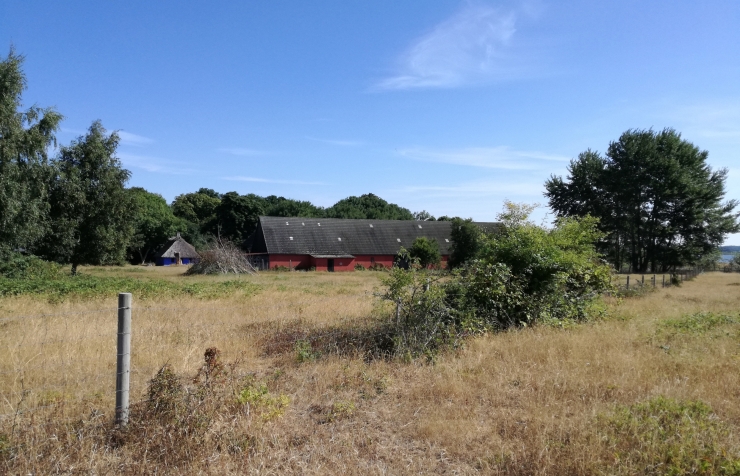
Originally the magazine was a propaganda pamphlet for all the virtues of margarine, but Peter Freuchen changed that right away. His articles were sent to Copenhagen by way of the Mail Boat and railway.
He joined the Danish resistance in WWII and even before the war he hid German refugees on his island. He had to flee to Sweden where he married Dagmar Cohn a renowned fashion illustrator. Together they moved to New York, where Peter Freuchen continued to publish books and articles. He was also employed by the film industry as a consultant and scriptwriter, specializing in Arctic-related scripts, amongst others MGM’s Oscar-winning Eskimo/Mala the Magnificent featuring Freuchen as Ship Captain. In 1956, he won $64,000 on the $64,000 Question, an American TV quiz-show on the subject “The Seven Seas”.

Standing on the “Summit” of Enehøje, one can see the structure of the little pavilion Peter Freuchen built using the jawbones of a whale.

After lunch he loved to lie in the grass looking out over the Fjord. To my big surprise the municipality of Nakskov had sponsored a bronze sculpture of Peter Freuchen dozing in the grass. And in my opinion a very good sculpture. It is made by the Danish artist John Kørner, a local boy from Onsevig who has made a very successful career as a painter. In my opinion one of the best contemporary Danish artist’s.
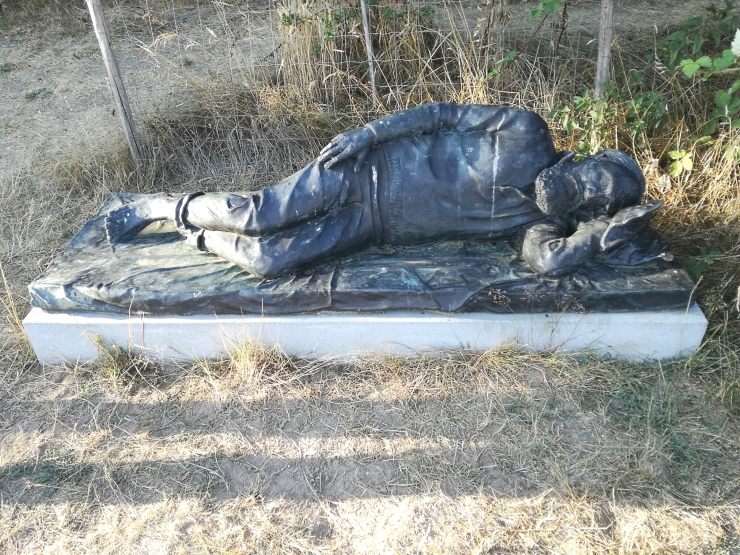
As a matter of fact, I didn’t know that John Kørner made sculptures, but the Municipality has also sponsored a sculpture by Kørner of Victor Cornelins, a Danish school teacher, musician, and public speaker. The sculpture of Victor Cornelins is placed in front of the Railway Station in Nakskov.
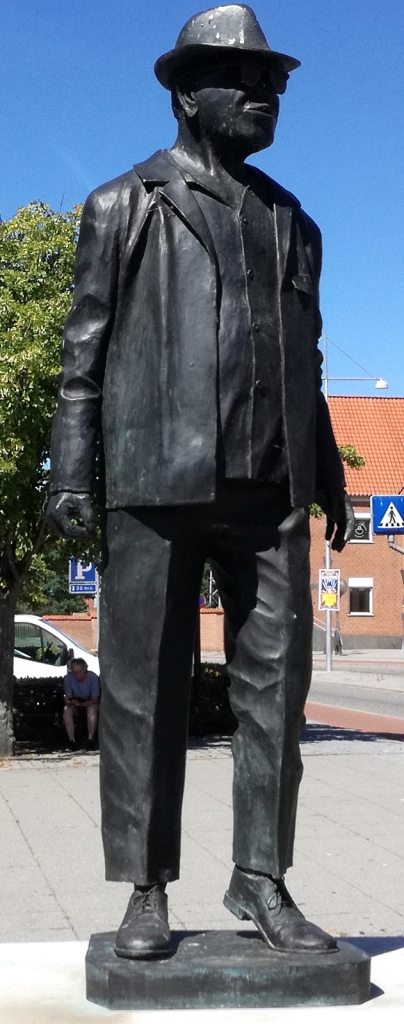
Victor was born on the island of St Croix in Virgin Islands in 1898, at that time still under Danish colonial rule, which ended 19 years later when USA bought the islands during WWI, in 1917.
Victor was 7 years old when he was transported to Denmark together with his half-sister to participate as human exhibits in a colonial exhibition at the amusement park of Tivoli in Copenhagen. After this ordeal Cornelins earns a place at a school for children without parents, Vajsenhuset, eventually he is also allowed to attend teacher college after finishing secondary school.

After graduating from the Jonstrup Teacher College Cornelins begins his 55-year teaching career at the island of Lolland, where he used to spend many of his summer holidays after arriving in Denmark. On the island of Lolland, and especially in the city of Nakskov, he becomes a well-known and well respected public figure and later also nationally known in radio shows with artists and intellectuals. He teaches at Nakskov Public school where he also becomes a deputy inspector and in addition he also leads the city’s music school.
John Kørner (b. 1966) is an artist who often addresses current concerns such as sex trafficking (Women for Sale, 2011) and war (War Problems, 2008).
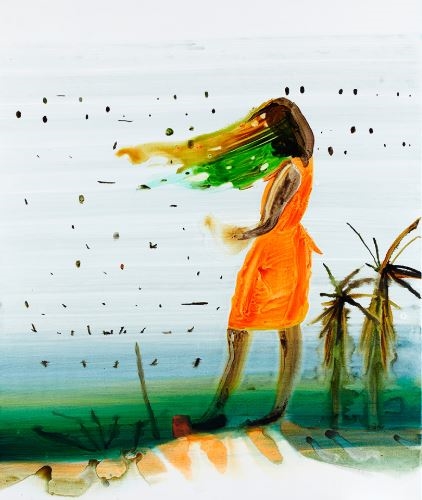
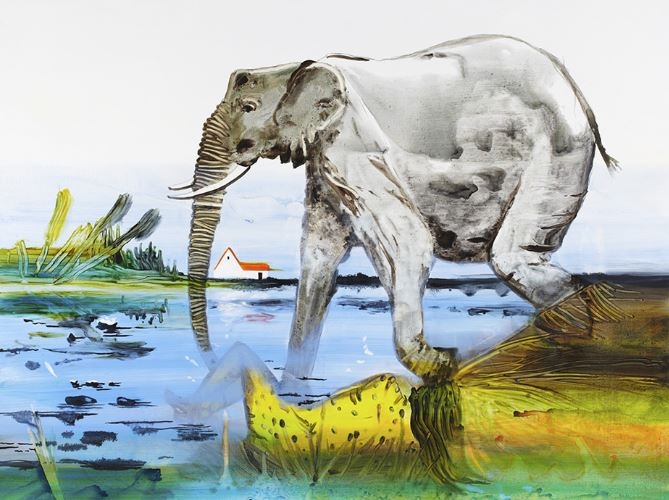

John Kørner works in various media, including painting, graphics, sculpture and installation. He has undertaken several decorating commissions, including the mural Afghanistan for Frederik VIII’s Palace at Amalienborg.
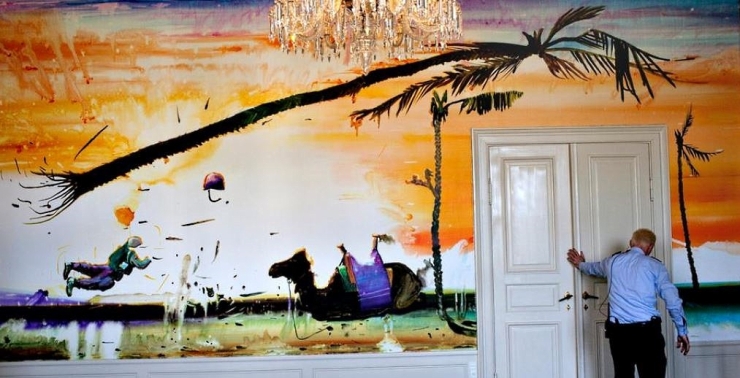
Nationally, Kørner’s works are found at the ARKEN Museum of Modern Art in Ishøj, ARoS, the Aarhus Museum of Art and the National Gallery of Denmark in Copenhagen. In addition, his works are represented in international collections including the Rubell Family Collection in Miami and the Tate Gallery and Saatchi Collection in London.



